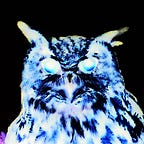Simply the Best: Tina Turner
In tracing the story of great female rock musicians and some of the women who influenced them, I’ve been taking a roughly chronological approach. That gets a bit confounding with Tina Turner, whose career started in the 1950’s and ended with her retirement at age 70, right on the heels of a massively successful global tour.
My recent columns have focused on “hidden gems” — artists who I think have not received the recognition they deserved. I’ve also emphasized artists who broke the mold, by doing things women were traditionally discouraged from doing, like composing, arranging, playing instruments, or leading bands.
Tina Turner is decidedly not a hidden gem. She is a larger-than-life artist whose presence and impact has few parallels. She also defies categorization. She was sometimes called the Queen of Rock and Roll (a title also bestowed on Joan Jett), but she was arguably also one of the greatest blues and soul singers of all time. She could do almost any kind of music, and she usually made it bigger and more explosive than it would have been in anyone else’s hands.
Turner did not play any instruments (at least on stage), but she did everything else. She wrote, produced, led bands, and simply commanded. She was in high demand by the other artists of her generation, which led to a wide variety of collaborations. Male artists did not mind being upstaged by her because she was, and is, one of a kind.
Turner’s original name was Anna Mae Bullock. Her childhood was difficult — -her father physically abused her mother, who eventually left (without the kids). When her father remarried, he in turn sent Anna Mae to be raised by her grandmother. The pain of that experience colors much of her work — she often conveys a sense that the world hangs on a knife-edge.
As a teenager, she was fascinated by musical performers, and hung out at nightclubs, occasionally taking the opportunity to get up on stage. She did not have any formal training but got a reputation for having a strong voice and good stage presence.
She figured out she could sing when Ike Turner heard her perform several times and, after initially brushing her off, invited her to be the lead singer in his band. He quickly took control over her budding career, and even renamed her.
Ike was undoubtedly a great musician, producer, coach and gauge of talent, but he was also manipulative and abusive. Eventually Tina left him, spent some time out of the public eye, and then struck out on her own. (This is a very brief synopsis of a long, excruciating story that has been the subject of multiple documentaries and a memoir.) Her revival in the 1980’s led to one of the greatest careers of anyone in the history of show business.
I saw her live in 1985, and the entire performance was overwhelming. In addition to her mesmerizing voice and stage presence, she possessed a volcanic sexual energy which never waned even as she hit 70. She only recently retired from performing.
You have undoubtedly seen and heard a lot of her performances, but there still may be a couple here that are new to you.
“Proud Mary”
It is hard to watch this, knowing as we do now that Ike was abusing her all the while. But it is a wonderful performance, and a signature song for her. After she left Ike, she continued performing it as a staple of all her shows, and made it emphatically her own. She went on to forge a career as one of the greatest blues, soul and rock vocalists of all time, and in my view, easily the best voice of her generation.
They say the best revenge is living well, and Tina Turner has certainly done that. (Note: to watch this, click on the embedded link that says “Watch on YouTube”)
“The Best”
There are a lot of soul and rock divas with big voices. Tina’s voice isn’t just big, it’s a monument. But what makes her unique is her ability to suffuse each note with exuberance and anguish at the same time. I wager most singers would sell their souls for that quality. Here is a song which captures that emotional duality perfectly.
“We Don’t Need Another Hero (Thunderdome)”
Tina played the chief villain in the third Mad Max film, and also sang the title song. Here is the original soundtrack version. One thing that is so interesting about this is that the backing instrumentation isn’t heavy, but relatively mellow with a nice swing. It could have been a pop song. But Turner’s vocal delivery makes it feel dramatic and huge, which is why people remember it as such an epic song.
Years later, here she is performing the same song as the encore to a live concert. There are several performances of this song posted on the internet. This is my favorite so far:
“Cose Della Vita”
In this video, shot in 1998, Tina makes a guest appearance in Munich with Eros Ramazotti, an up-and-coming Italian pop star. He does the first verse, and then she makes her entrance, and it feels like an earthquake. Those deep opening notes are just chilling, almost surreal. In the second half of the song, she really lets loose. At one point, he kneels down, I think in part to prevent himself from being blown off the stage.
Thanks to Kevin Alexander for publishing.
